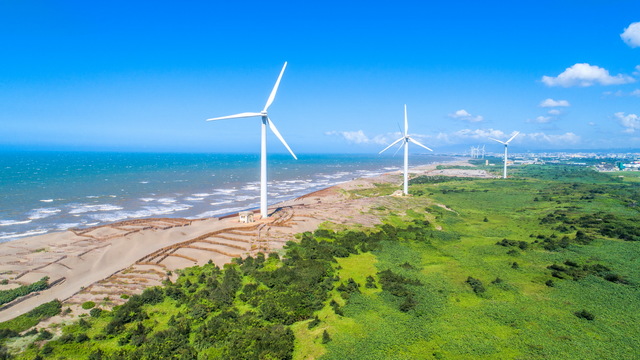Guanyin Grassland Sand Dunes Introduction
A popular attraction that went viral on social media platforms like IG and FB is the Caoshan Sand Dunes, which features a unique landscape of an "oceanic desert" stretching 8.1 kilometers. It is the most expansive and intact coastal feature in Taiwan. When the sun sets, rows of wind turbines stand tall, and the shoreline merges seamlessly with the sea. The undulating sand dunes are adorned with intersecting footprints in the winding sand patterns, creating a silent yet desolate beauty that attracts numerous photography enthusiasts and influencers. Movies like "Secret That Cannot Be Told" and the TV series "Polis Master" have been filmed here. Following Route 61, one can journey from north to south through four major ecological highlights in Taoyuan, including Ciaozu Port Wetland, Caoshan Sand Dunes, Guanyin Zhaojiao, and Xinyi Stone Weir. Known as the "Taiwanese Sahara Desert," Caoshan Sand Dunes were formed by the accumulation of sand driven inland by strong northeast monsoons and south winds. The dune cluster stretches from the mouth of Laojie Creek in Dayuan District to the mouth of Dajue Creek in Guanyin District, oriented in a northeast-southwest direction. The width ranges from approximately 400 meters in the northern section to 600 meters in the south, covering an area of 4 square kilometers that has developed over hundreds of years. The dunes can reach heights of up to 15 meters, and making the effort to climb to the ridgeline rewards visitors with an expansive view. The Taiwan Environmental Information Association has selected the Caoshan Sand Dunes coastline as one of the "Nine Coastlines Worth Protecting in Taiwan" (the other location in Taoyuan that made the list is Guanyin Zhaojiao), highlighting it as a rare coastline in northern Taiwan that has not been damaged by human activities. The Caoshan Sand Dunes also feature coral reef ecosystems and rich coastal forest ecosystems, including salt-tolerant and wind-resistant plants such as Casuarina, Chinese tallow, dodder, castor bean, and Tithonia diversifolia, which help to block windblown sand and prevent coastal erosion, adding a green landscape along the dunes.






































